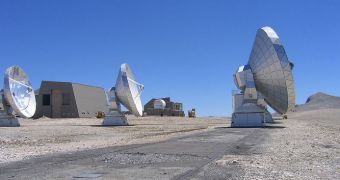Astronomers and astrophysicists were finally able to find the answer to a question that has been around for quite some time, namely why older galaxies appear to have been producing more stars than their modern counterparts. According to experts at the Harvard Smithsonian Center for Astrophysics (CfA), this is largely due to very large accumulations of very cold and dense gas, which is the prime matter required for forming stars inside nebulae. In our current understanding of the process, young blue stars form when a cloud of gas collapses on itself due to weight, igniting in the process, Wired reports.
The new investigation was conducted using data collected from 19 galaxies, all spread across the northern hemisphere. All of these structures were at least 8 billion years old, although some reached as much as 10 billion years. The survey demonstrated that these old structures had considerably more interstellar gas inside them, made up of very dense hydrogen, existing at temperatures between minus 441 to minus 414 degrees Fahrenheit (-262 to -247 degrees Celsius). Modern galaxies carry a lot less of the stuff inside their stellar nurseries.
“This is really pioneering work. It unambiguously confirms that these galaxies really are more gas-rich, so the reason they made more stars back in the day is that they had more fuel to burn,” explains CfA astrophysicist Kai Noeske. This study of very old galaxies also provides some insights into the early history of the Universe, as the light these structures emitted more than 10 billion years ago paint a picture of how the Cosmos may have looked like just 3 billion years after it was formed. The difference between modern and ancient galaxies is that the latter produced stars at 10 to 100 times higher rates.
“This is just the tail end of the population of the normal galaxies, just the biggest and most massive ones. We just can’t see the normal ones, because they’re too faint,” explains astronomer Dawn Erb, who is based at the University of California in Santa Barbara (UCSB), but was not involved in the new study. More advanced observations are scheduled for 2012, when the ALMA observatory in Chile is brought online at its full capacity. Currently, the new observatory only features three antennas, linked together through interferometry.

 14 DAY TRIAL //
14 DAY TRIAL //